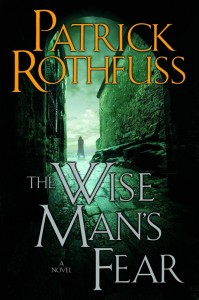
The Pastel City
By M. John Harrison
Hardcover
Pages: 176
Publisher: Avon Books
Release Date: 1971
ISBN-10: 038000057
Every moment of a science fiction story must represent the triumph of writing over worldbuilding.
Worldbuilding is dull. Worldbuilding literalises the urge to invent. Worldbuilding gives an unnecessary permission for acts of writing (indeed, for acts of reading). Worldbuilding numbs the reader’s ability to fulfil their part of the bargain, because it believes that it has to do everything around here if anything is going to get done.
Above all, worldbuilding is not technically neccessary. It is the great clomping foot of nerdism. It is the attempt to exhaustively survey a place that isn’t there. A good writer would never try to do that, even with a place that is there. It isn’t possible, & if it was the results wouldn’t be readable: they would constitute not a book but the biggest library ever built, a hallowed place of dedication & lifelong study. This gives us a clue to the psychological type of the worldbuilder & the worldbuilder’s victim, & makes us very afraid.
It was the quote heard ’round the Nerddoom; it set the blogosphere aflame and rose the hackles of readers brought up on the likes of J.R.R. Tolkien, Robert Jordan and Stephen Donaldson. He is an ‘utter, arrogant asshole.‘ they yelled. Or, ‘he probably realised he could never come close to Tolkien in worldbuilding [sic] and decided it was just unnecessary crap.‘. Whether in agreement or disagreement with Harrison, shouts were raised and batllelines drawn, all in the name of world-building and its importance to the genre.
And I’ll admit, I was one of those angry trolls. I turned up my nose at Harrison, shrugged off his fiction because of (what I considered) off-base comments made on his blog. So, then, it was with obvious, pride-threathening trepidation that I accepted a challenge from Sam Sykes, author of Tome of the Undergates, to tackle Harrison’s work. Along with several others, I was tasked with putting aside my preconceptions, and to broaden my horizons by reading a novel that was well off my radar. Sykes’ choice for me was The Pastel City, the first of Harrison’s many stories set in and around the city (or cities?) of Viriconium. My experience with The Pastel City showed me that, though I still might not wholly agree with his opinions on world-building, I, and many others, might have misunderstood what he was trying to say.
Read More »
 Charles Yu’s How To Live Safely In A Science Fiction Universe was released earlier this year to great critical acclaim and has begun showing up on Best of 2010 lists around the web.
Charles Yu’s How To Live Safely In A Science Fiction Universe was released earlier this year to great critical acclaim and has begun showing up on Best of 2010 lists around the web.



